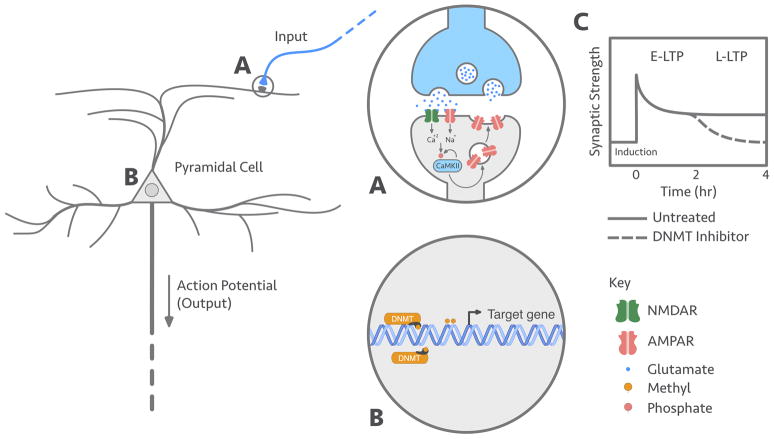Figure 1.
Molecular mechanisms of memory. A. The induction and early-phase stabilization of LTP (E-LTP) from a glutamatergic presynaptic input requires dual AMPAR and NMDAR activation, flooding the postsynaptic compartment with calcium and sodium. This burst of intracellular calcium leads to the phosphorylation of CaMKII, which increases AMPAR sensitivity and postsynaptic density. CaMKII activation causes CaMKII auto-phosphorylation, a local and short-term mnemogenic reaction that facilitates E-LTP. B. The late-phase stabilization of LTP (L-LTP) requires active DNA methylation of and gene expression of plasticity-related genes. C. Small molecule inhibition of DNMT activity inhibits L-LTP (Miller et al., 2008), in a similar fashion to inhibitors of gene transcription like Actinomycin D (Frey et al., 1996), without affecting induction and E-LTP.

